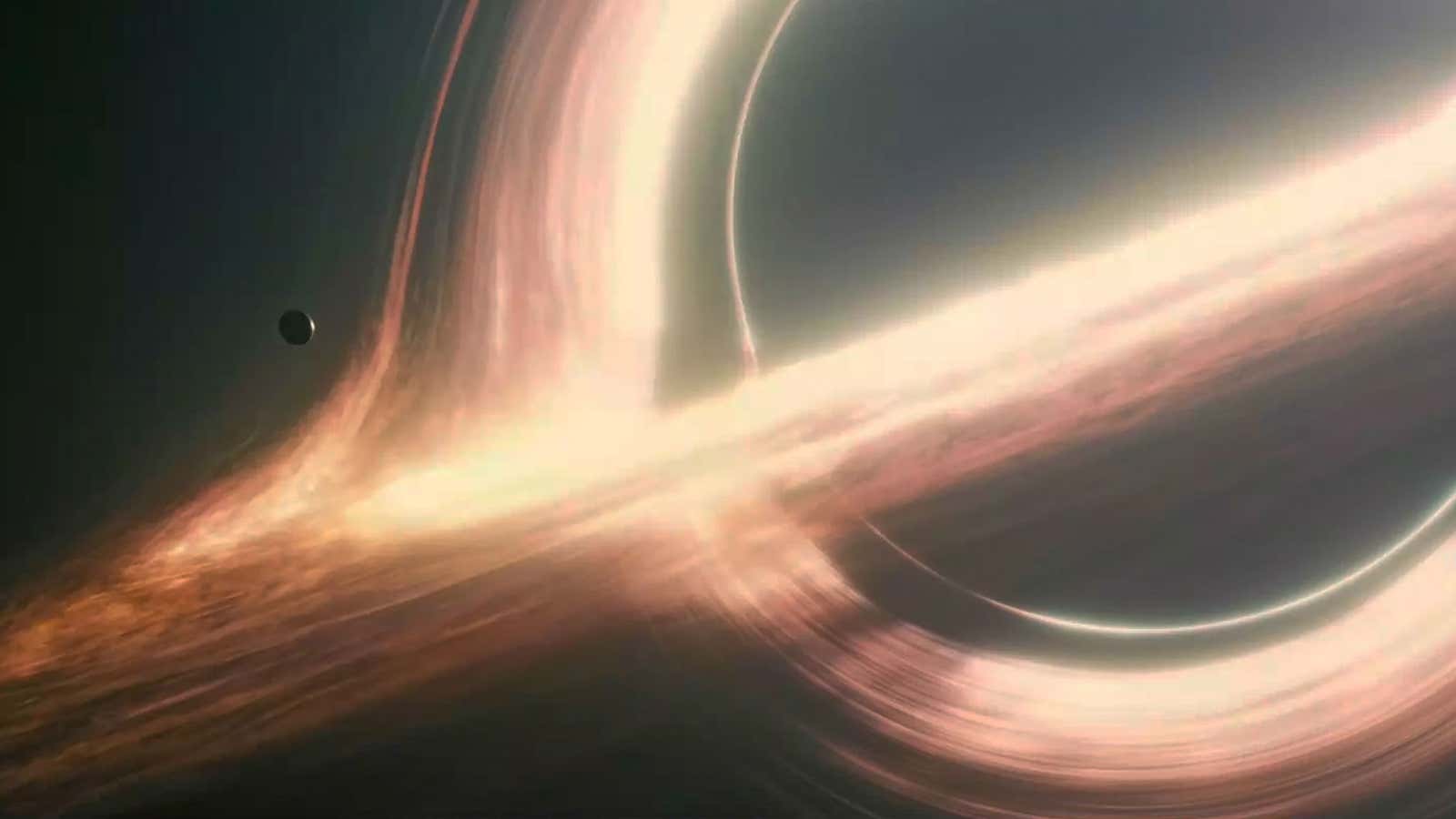Say what you will about its narrative cohesiveness (or lack thereof), but the science in the 2014 movie Interstellar is pretty sound. Sound enough, in fact, that some scientists think it should be taught to students.
Kip Thorne, a renowned theoretical physicist at Caltech, served as scientific consultant to the film, in addition to being an executive producer. Now he has co-authored a paper in the American Journal of Physics that explains why the film can be useful in the classroom.
“Although wormholes were central to the theme of Contact and to many movies and TV shows since then, including Star Trek and Stargate, none of these have depicted correctly a wormhole as it would be seen by a nearby human,” Thorne wrote. “Interstellar is the first to do so.”
David Jackson, the editor of the American Journal of Physics, told BBC News that a team of experts had carefully reviewed the physics from the film and found it to be accurate. The paper argues that the visualizations in Interstellar are perfect for fourth-year undergraduates or graduate students studying general relativity.
Many leading scientists agree. Adam Riess, a Nobel-winning astrophysicist and professor at Johns Hopkins University, told Quartz last year that he believed the film offered “teachable moments” that he planned to use in a future course. “I recognized a lot of well thought out physics in the movie,” he said. “It was very obvious that a lot of thought had gone into the science, especially general relativity.”
Praise for the film’s science has centered around its depiction of a wormhole—a hypothetical object in the universe that can connect two distant points in spacetime. The exterior of the wormhole in Interstellar appears as it would in real life: a sphere with a warped panorama of whatever celestial objects await on the other side.
The movie did take some artistic license on the interior of the wormhole, however. Thorne mentions in his book The Science of Interstellar that Christopher Nolan and his team based the journey through the wormhole on Thorne’s equations and simulations, but tweaked it a bit to create a more striking image for the viewer.
An actual journey through a wormhole might look a little more like this—though no one truly knows what it would look like, as wormholes have yet to be observed in the universe.
Meanwhile, the black hole shown in the film—while still more scientifically accurate than any black hole ever put on screen—was actually dumbed down a bit for the movie. In a paper published to Classical and Quantum Gravity, Thorne and the film visual effects team describe how their original black hole was a bit more complex than what made it into the movie.
Interstellar‘s black hole, pictured at the top of this story, has a fiery orange accretion disk (the rotating ring of matter that can accumulate around a massive body, like a black hole). In reality, the accretion disk would probably be blue, due to the Doppler effect. But blue is not nearly as menacing as bright yellow-orange.
